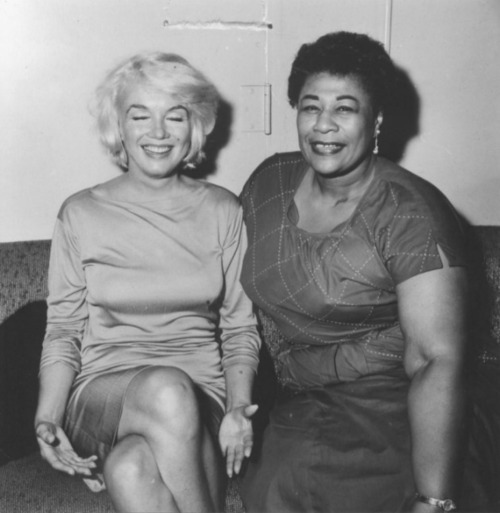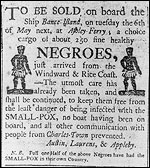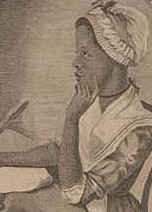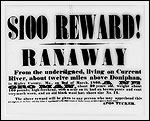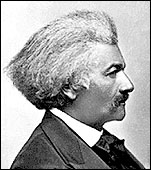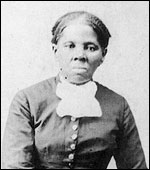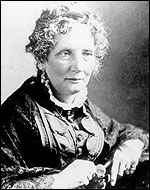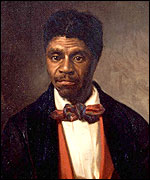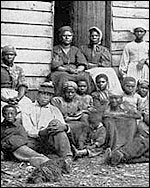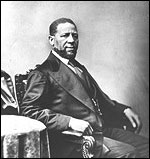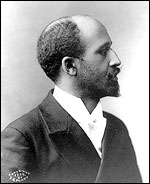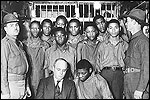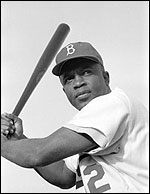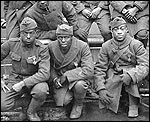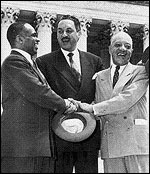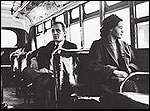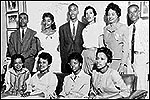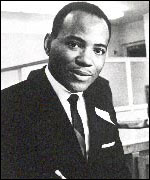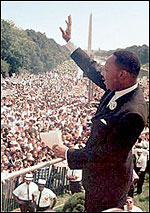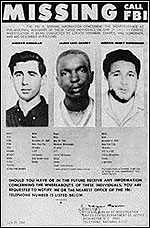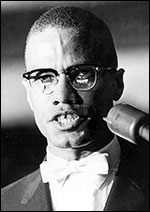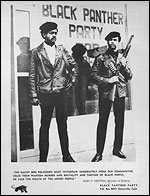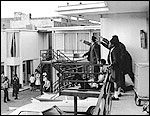
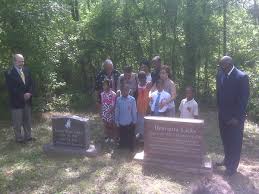

On day 6 of my challenge, I chose to write about Henrietta Lacks. There is not a happy ending to her "story" but a bittersweet one. Nonetheless, she was and is responsible for effecting and saving lives even today...
Henrietta Lacks was born Loretta Pleasant on August 1, 1920
in Roanoke, Virginia, to Eliza and John Randall Pleasant I. Her family is uncertain how her name changed from Loretta to Henrietta. Eliza, her mother, died giving birth to her tenth child in 1924.
Henrietta's father felt unable to handle the children, so he took them
all to Clover, Virginia and distributed the children among relatives. Henrietta, nicknamed "Hennie," ended up with her grandfather, Tommy Lacks.
Pleasant married her first cousin, David "Day" Lacks (1915–2002), in Halifax County, Virginia.
David had already been living with Henrietta's grandfather when she
moved there at age 4. Their marriage occurred on April 10, 1941, after
their first two children were born (the first when Henrietta was just
14).
At the end of 1941, their cousin Fred Garret convinced the Lacks
couple to leave the tobacco farm and have Day work at Bethlehem Steel's
Sparrow's Point steel mill. Soon, they moved—Day first, then Henrietta
and their two oldest children, Lawrence and Lucile Elsie Pleasant
(Elsie)—to Maryland. David bought a house for the family with the money
Garret gave Day when he left to go overseas. Their house was on New
Pittsburgh Avenue in Turners Station, now a part of Dundalk, Baltimore County, Maryland. This community was one of the largest and one of the youngest of the approximately forty African American communities in Baltimore County.
On January 29, 1951, Henrietta went to Johns Hopkins Hospital
because she felt a knot inside her. It all started when she asked her
cousins to feel her belly, asking if they felt the lump that she did.
Her cousins assumed correctly that she was pregnant. But, after giving
birth to her fifth child, Joseph, Henrietta started bleeding abnormally
and profusely. Her local doctor tested her for syphilis, which came back negative, and referred her to Johns Hopkins.
Johns Hopkins was their only choice for a hospital, since it was the
only one in proximity to them that treated black patients. Howard Jones,
her new doctor, examined Henrietta and the lump in her cervix.
It was like nothing he had ever seen before. He cut off a small part of
the tumor and sent it to the pathology lab. Soon after, Jones
discovered she had a malignant epidermoid carcinoma of the cervix Stage 1 (cervical cancer).
Lacks was treated with radium tube inserts,
which were sewn in place. After several days in place, the tubes were
removed and she was released from Johns Hopkins with instructions to
return for X-ray treatments as a follow-up. During her radiation
treatments for the tumor, two samples of Henrietta's cervix were
removed— a healthy part and a cancerous part— without her permission. The cells from her cervix were given to Dr. George Otto Gey. These cells would eventually become the "HeLa immortal cell line," a commonly used cell line in biomedical research.
Lacks returned for the X-ray treatments. However, her condition worsened and the Hopkins doctors treated her with antibiotics, thinking that her problem might be complicated by an underlying venereal disease (she had neurosyphilis and presented with acute gonorrhea at one point as well).
In significant pain and without improvement, Lacks returned to
Hopkins on August 8th for a treatment session but asked to be admitted.
She remained at the hospital until her death. Though she received treatment and blood transfusions, she died of uremic poisoning on October 4, 1951 at the age of thirty-one. A subsequent partial autopsy showed that the cancer had metastasized throughout her body.
The cells from Henrietta's tumor were given to researcher George Gey, who "discovered that [Henrietta's] cells did something they'd never seen before: They could be kept alive and grow."
Before this, cells cultured from other cells would only survive for a
few days. Scientists spent more time trying to keep the cells alive than
performing actual research on the cells but some cells from Lacks's
tumor sample behaved differently than others. George Gey was able to
isolate one specific cell, multiply it, and start a cell line. Gey named
the sample HeLa,
after the initial letters of Henrietta Lacks' name. As the first human
cells grown in a lab that were "immortal" (they do not die after a few
cell divisions), they could be used for conducting many experiments.
This represented an enormous boon to medical and biological research.
As reporter Michael Rogers stated, the growth of HeLa by a researcher at the hospital helped answer the demands of the 10,000 who marched for a cure to polio shortly before Lacks' death. By 1954, the HeLa strain of cells was being used by Jonas Salk to develop a vaccine for polio.
To test Salk's new vaccine, the cells were quickly put into mass production in the first-ever cell production factory.
Demand for the HeLa cells quickly grew. Since they were put into mass
production, Henrietta's cells have been mailed to scientists around the
globe for "research into cancer, AIDS, the effects of radiation and toxic substances, gene mapping, and countless other scientific pursuits".
HeLa cells have been used to test human sensitivity to tape, glue, cosmetics, and many other products. Scientists have grown some 20 tons of her cells, and there are almost 11,000 patents involving HeLa cells.
In the early 1970s, the family started getting calls from researchers
who wanted blood samples from them to learn the family's genetics (eye
colors, hair colors, and genetic connections). The family wondered why
and this is when they learned about the removal of Henrietta's cells.
In 1996, Morehouse School of Medicine in Atlanta, the state of Georgia and the mayor of Atlanta recognized the late Henrietta Lacks' family for her posthumous contributions to medicine and health research.
Her life was commemorated annually by Turners Station residents for a
few years after Morehouse's commemoration. A congressional resolution
in her honor was presented by Robert Ehrlich following soon after the first commemoration of her, her family, and her contributions to science in Turners Station.
Events in the Turners Station's community have also commemorated the
contributions of others including Mary Kubicek, the laboratory assistant
who discovered that HeLa cells lived outside the body, as well as Dr.
Gey and his nurse wife, Margaret Gey, who together after over 20 years
of attempts were eventually able to grow human cells outside of the
body.
On September 14, 2011, the Board of Directors of Washington ESD 114 Evergreen School District
chose to name a new health and bioscience high school in her honor. The
new school, scheduled to open in the fall of 2013, will be named
Henrietta Lacks Health and Bioscience High School
Although Henrietta's death was unfortunate and untimely; she, unknowingly, became a hero in her death. She is thankfully being celebrated for the lives she helped to save in her absence. Her story is truly bittersweet, heart wrenching and inspiring.
www.blackbloggersconnect.com/articles/173/2-100


